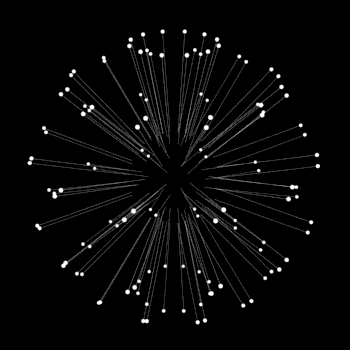The function #f(x)=sin(3x)+cos(3x)# is the result of series of transformations with the first one being a horizontal translation of the function #sin(x)#. Which of this describes the first transformation?
1 Answer
We can get the graph of
a horizontal translation of
#pi/12# radians to the lefta stretch along
#Ox# with a scale factor of#1/3# units- a stretch along
#Oy# with a scale factor of#sqrt(2)# units
Explanation:
Consider the function:
# f(x) = sin(3x)+cos(3x) #
Let us suppose we can write this linear combination of sine and cosine as a single phase shifted sine function, that is suppose we have:
# f(x) -= Asin(3x+alpha) #
# \ \ \ \ \ \ \ = A{sin3xcosalpha+cos3xsinalpha} #
# \ \ \ \ \ \ \ = Acosalpha sin3x + Asinalphacos3x #
In which case by comparing coefficients of
# Acos alpha = 1 \ \ \ # and# \ \ \ Asinalpha = 1#
By squaring and adding we have:
# A^2cos^2alpha+A^2sin^2alpha = 2 => A^2=2=> A=sqrt(2)#
By dividing we have:
# tan alpha => alpha=pi/4 #
Thus we can write,
# f(x) -= sin(3x)+cos(3x) #
# \ \ \ \ \ \ \ = sqrt(2)sin(3x+pi/4) #
# \ \ \ \ \ \ \ = sqrt(2)sin(3(x+pi/12)) #
So we can get the graph of
- a horizontal translation of
#pi/12# radians to the left- a stretch along
#Ox# with a scale factor of#1/3# units- a stretch along
#Oy# with a scale factor of#sqrt(2)# units
Which we can see graphically:
The graph of
graph{sinx [-10, 10, -2, 2]}
The graph of
graph{sin(x+pi/12) [-10, 10, -2, 2]}
The graph of
graph{sin(3x+pi/4) [-10, 10, -2, 2]}
The graph of
graph{sqrt(2)sin(3x+pi/4) [-10, 10, -2, 2]}
And finally, the graph of the original function for comparison:
graph{sin(3x)+cos(3x) [-10, 10, -2, 2]}


